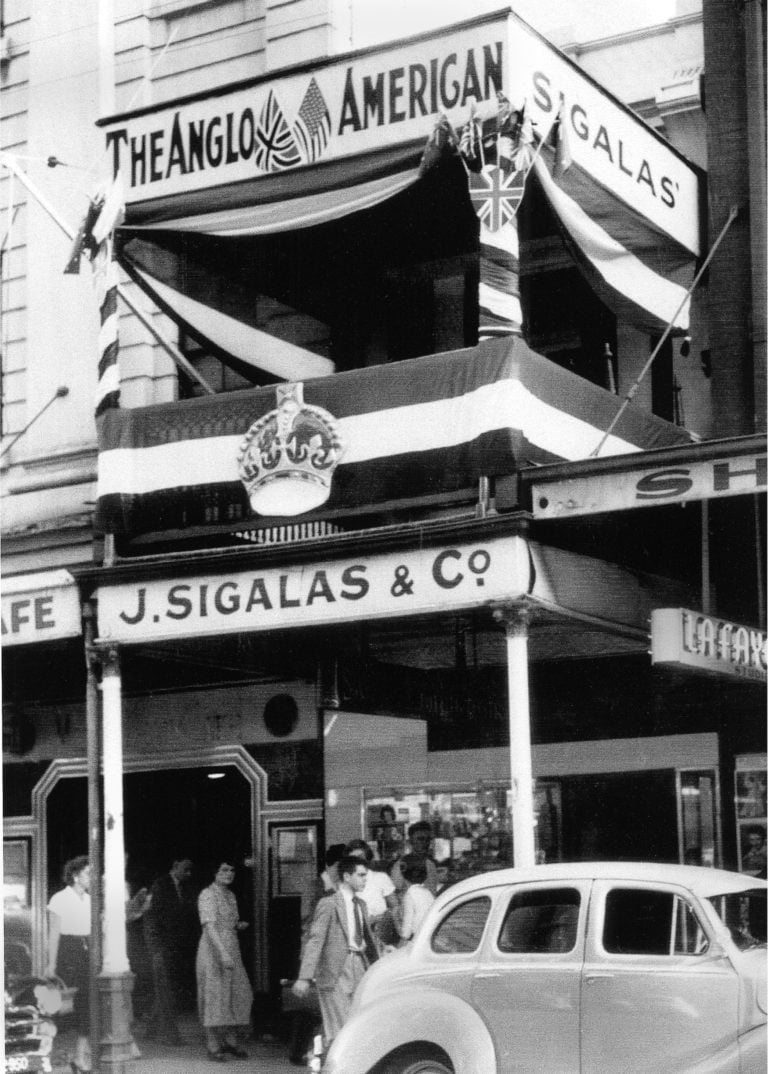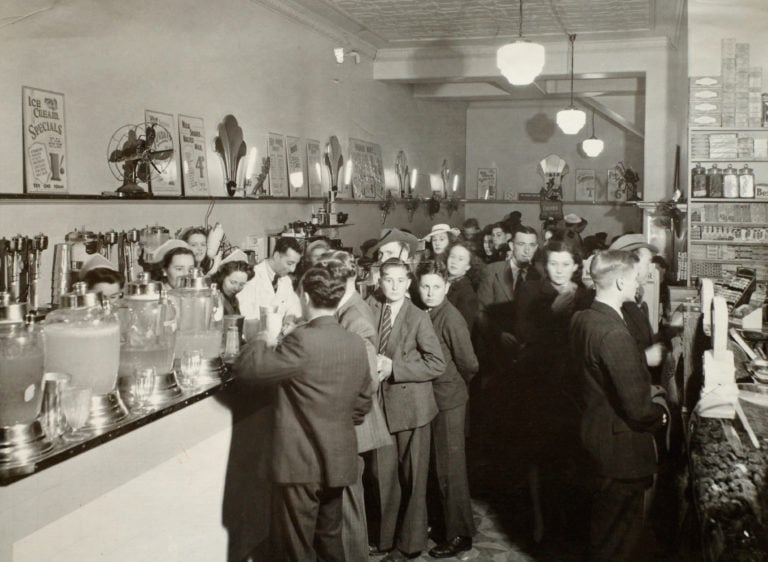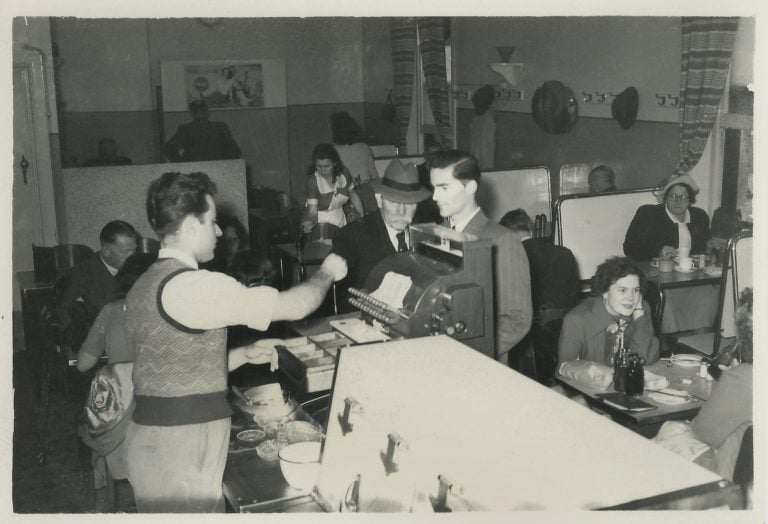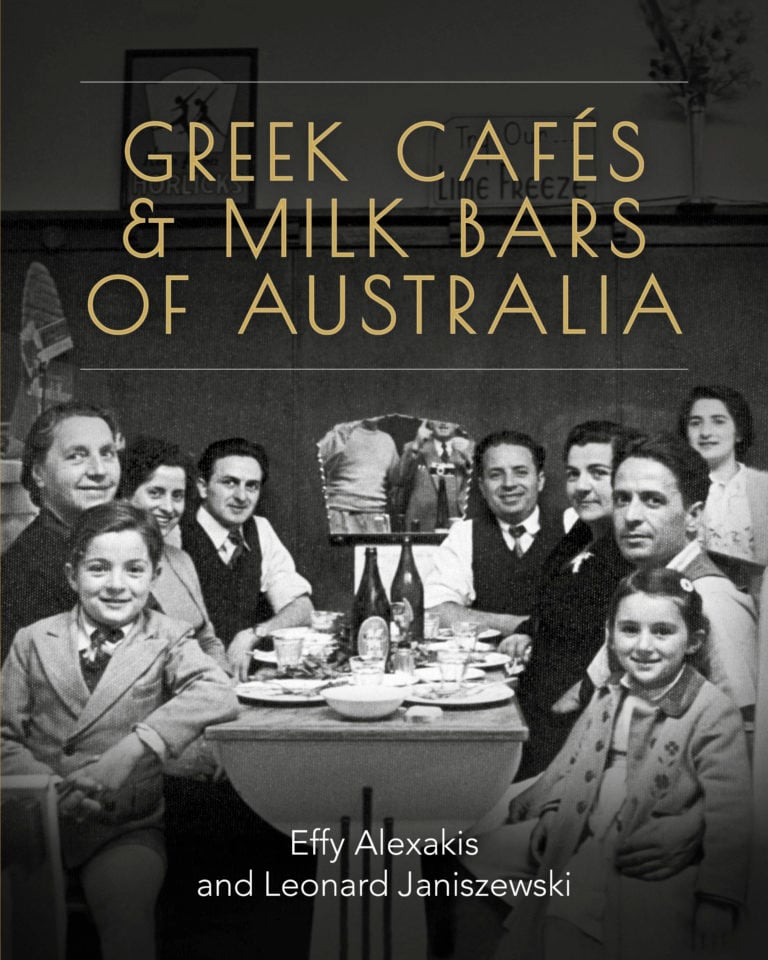In an Australia many still remember there was a Greek café or milk bar – open all hours, 7 days a week – in every suburb and every town.
Many remember these enterprises with nostalgia. Memories were rekindled at a recent lecture, entitled “Greek cafes and milkbars of Australia”, by Macquarie University historian Leonard Janiszewski and documentary photographer Effy Alexakis in South Australia.
The fascinating lecture documented the history of Greek cafes. It presented a chronicle of how these family-based food-catering enterprises set the agenda and broadly affected and influenced Australian popular culture.
Greek cafés and milk bars in Australia were a ‘Trojan Horse’ for the Americanisation of the eating, social and cultural habits of Australians from the very start of the twentieth century. They introduced American commercial food-catering ideas, technology and products and influenced the development of cinema, popular music and even architecture along American lines. The Greek café and milk bar ‘transformed’ Australian popular culture.

Quite a number of Australia’s early Greek food caterers had relatives and friends living and working in the USA, or had been there themselves working as, or for, Greek-American food caterers.
During the 1910s Greek oyster saloons and fish shops introduced the front-service soda fountain from the USA as well as ‘American-style’ ice cream, milk chocolate and candies. By the 1920s these oyster saloons and fish shops had transformed themselves into soda/sundae ‘parlors’, and had cultivated such an insatiable public demand for their new ‘American-style’ food sensations, that American food companies quickly crossed the Pacific into the antipodes. In the early 1930s the milkshake was popularised and the milk bar created, based upon the American drug-store soda ‘parlor’; the concept then travelled to New Zealand, South Africa and Great Britain, and back to the USA. By the late 1930s, the hamburger was commercially emerging in Australia’s Greek cafés. This was also the start of the ‘golden age’ of the Greek café and milk bar, which brought all these American food-catering influences together and instigated a long-term working relationship with cinemas. By the mid-1940s jukeboxes had appeared in a number of Greek cafés and milk bars. Consequently, in the late 1950s, the rock’n’roll generation embraced the ‘Top 40’. In the late 1960s and early 1970s Greek cafés and milk bars were undergoing a transformation to ‘take-aways’ in response to rapidly growing ‘fast food’ economy that they had assisted in developing. Traditional Greek cafés are now very few in number, nostalgic reminders of the powerful vehicles of social cultural change they once were.

Presented by social historian Leonard Janiszewski and documentary photographer Effy Alexakis, the lecture not only investigates in detail the overall development of Greek cafés and milk bars across Australia (including Adelaide and SA), but also the personal stories of those involved – proprietors, waiting staff and customers.
What the presentation clearly demonstrated was the transformative nature of Greek migration and settlement upon our nation, but that – to a significant extent – through the Greek diaspora, Australia’s popular cultural allegiances were being drawn to the United States rather than Britain. Australia had become part of the diaspora’s global circulation of ideas and experiences.

Rundle Street, Adelaide, SA, 1950s. Dan Morris (Dionyssios Moraitis) spent 15 years working in Chicago’s Greek-run catering establishments before arriving in Adelaide in 1930 and eventually opening Dan Morris’ Fish Café. His sons, Jimmy (Dimitri) and Bill (Vasili) also migrated to assist in the café. Photo: D. Mavrokefalou
Documentary photographer, Effy Alexakis, and historian, Leonard Janiszewski, have been researching the Greek-Australian historical and contemporary presence in both Australia and Greece since 1982. Their project and archives, ‘In Their Own Image: Greek-Australians’, encompasses visual, oral and literary material, together with memorabilia, and is based at Macquarie University, Sydney, in partnership with the Australian History Museum. Their archive is recognised as one of the most significant collections in the country on Greek-Australians.







